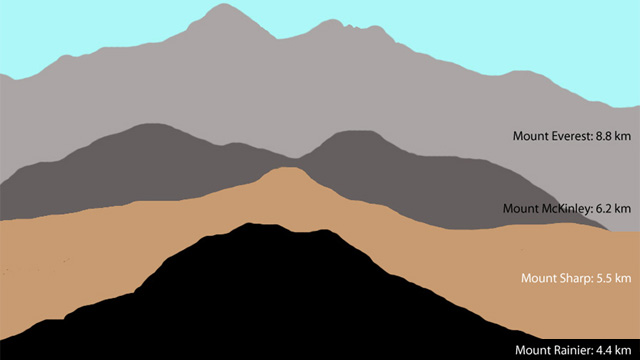
Ready for a real mash-up of explorer-history-science-mountaineering yack? A tale of two mountains on two planets? You have been forewarned...
The comparison between Earth-side mountain exploration and the planned expedition by the Mars rover Curiosity came to my mind as I read a book my family got me over the holidays: Last Climb, the story of the legendary Mount Everest expeditions of George Leigh Mallory.
I knew that it is quite a physical feat to summit that 29,029 foot terrestrial rooftop, but the detailed narrative of the arduous climb by the earliest Everest-peak-seekers, with their 1920's technology and the fact that they were treading where in all likelihood no one had tread before, really put 1924 Everest onto another planet, in my mind.
And now the first ever robot mountaineer is poised to begin its uphill climb—if not summit bid—on Mount Sharp in Martian territory. NASA's Curiosity is still at the bottom of the mound of sediment that it is planned to explore, 16,000 feet below the summit. Since landing on Mars in August 2012, it has only traveled about half a mile, taking its time checking out its systems and instruments and exploring the geology at the foot of the mountain. It's already revealed some intriguing geological features, including a layer of gravely material that shows all the hallmarks of having been laid down by running water in Mars' past.
Back to Everest in the early 1920s. At that time the Himalayan mountains -- and particularly Mount Everest -- were not unlike places on another planet, largely unexplored (by western explorers at least) and unknown territory. Satellite surveillance wouldn't exist for many decades yet, and armchair exploration with Google Earth was the better part of a century away. And, frankly, the first successful ascent to the summit was still two decades away through the icy mists.